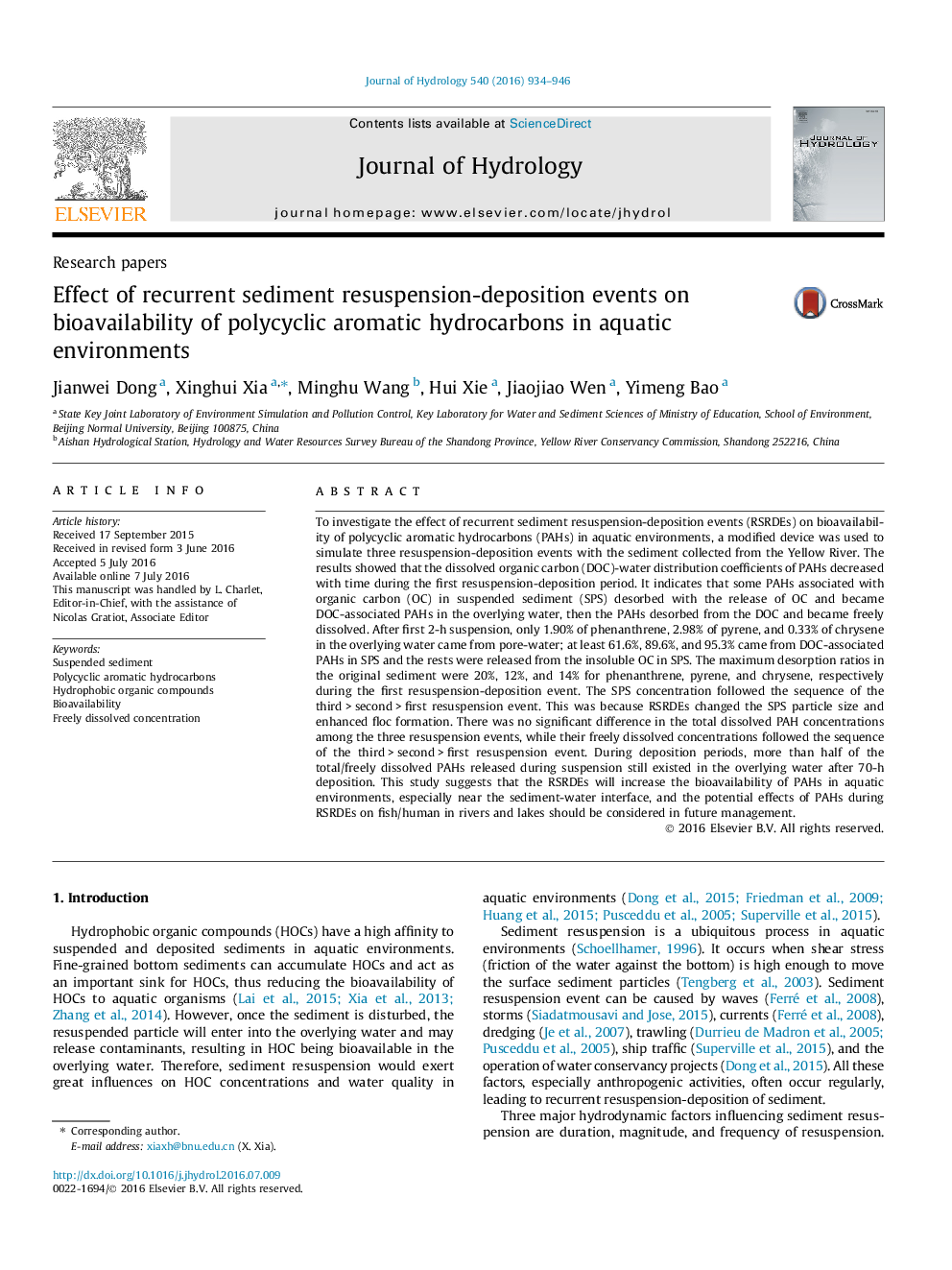| کد مقاله | کد نشریه | سال انتشار | مقاله انگلیسی | نسخه تمام متن |
|---|---|---|---|---|
| 6409648 | 1629912 | 2016 | 13 صفحه PDF | دانلود رایگان |
- >60% of PAHs in overlying water came from DOC-associated PAHs in suspended sediment.
- The maximum desorption ratios of PAHs in original sediment were 12-20%.
- Freely dissolved PAH concentrations: the first < second < third suspension event.
- Half of PAHs released during suspension existed in water after 70-h deposition.
- Recurrent suspension-deposition events may increase HOC bioavailability in rivers.
To investigate the effect of recurrent sediment resuspension-deposition events (RSRDEs) on bioavailability of polycyclic aromatic hydrocarbons (PAHs) in aquatic environments, a modified device was used to simulate three resuspension-deposition events with the sediment collected from the Yellow River. The results showed that the dissolved organic carbon (DOC)-water distribution coefficients of PAHs decreased with time during the first resuspension-deposition period. It indicates that some PAHs associated with organic carbon (OC) in suspended sediment (SPS) desorbed with the release of OC and became DOC-associated PAHs in the overlying water, then the PAHs desorbed from the DOC and became freely dissolved. After first 2-h suspension, only 1.90% of phenanthrene, 2.98% of pyrene, and 0.33% of chrysene in the overlying water came from pore-water; at least 61.6%, 89.6%, and 95.3% came from DOC-associated PAHs in SPS and the rests were released from the insoluble OC in SPS. The maximum desorption ratios in the original sediment were 20%, 12%, and 14% for phenanthrene, pyrene, and chrysene, respectively during the first resuspension-deposition event. The SPS concentration followed the sequence of the third > second > first resuspension event. This was because RSRDEs changed the SPS particle size and enhanced floc formation. There was no significant difference in the total dissolved PAH concentrations among the three resuspension events, while their freely dissolved concentrations followed the sequence of the third > second > first resuspension event. During deposition periods, more than half of the total/freely dissolved PAHs released during suspension still existed in the overlying water after 70-h deposition. This study suggests that the RSRDEs will increase the bioavailability of PAHs in aquatic environments, especially near the sediment-water interface, and the potential effects of PAHs during RSRDEs on fish/human in rivers and lakes should be considered in future management.
Journal: Journal of Hydrology - Volume 540, September 2016, Pages 934-946
